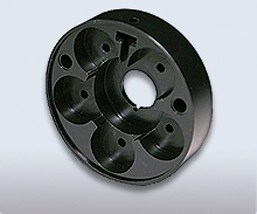
How To Choose a Rubber Manufacturer for Your Molded Products
A variety of industries use rubber to build solar panels, automotive parts, or medical devices. The right rubber manufacturer will use high-quality materials to deliver prototypes or full production services. Here is some more information on how to choose a rubber molding manufacturer for your business:
Request Quotes
Quotes are useful for businesses looking to partner with a rubber manufacturer by receiving valuable information on a variety of our services. They allow you to compare market rates and budgeting requirements, as well as request material samples from us. Your business will then be able to submit an order form, which begins the process of production. If you need a prototype, we will complete that step first for final approval before fabricating larger quantities.
Some of the applications we provide include custom rubber molding services, die cutting, and plastic extrusions. If you need a service that is not currently listed on our quote form, provide a short description in the “other” box. Additional details like material requirements and production deadlines are beneficial for us to know to meet your fabrication expectations.
Review Materials List
Professional rubber molding manufacturers provide a list of material options to meet your production goals. Some materials include silicone, neoprene, and natural rubber. Each product is inspected for quality assurance to meet specification requirements and industry standards. Our certifications include the American Society for Testing and Materials (ASTM) and the Rubber Manufacturers Association (RMA). If you’re unsure about what kind of material your product should be fabricated from, our team will provide professional guidance and samples.
Look For Responsive Customer Service
A benefit of partnering with us is our responsive customer service team. Our service members establish open communication pathways via email to keep you informed about the progression of your order. They are also available to assist you with submitting orders, uploading file formats, and making any necessary changes to your prototypes. Transparency is beneficial for companies looking to make long-term partnerships with us, as it allows for mutual trust and professionalism.
Check Production Capacity
Look for a manufacturing company that is capable of producing a range of quantities for your business. Small batches of product are useful for those with growing businesses, while large-scale production is beneficial for distributors that provide services across the country. These flexible options allow your business to order for restocks, new projects, or to create prototypes for investors.
Production timeframes vary depending on the quantity of products and what type of application they’re made with. Certain applications like custom molding may extend the timeframe for fabricating your product. Custom die cutting may also take longer to set up, as each machine must be fitted with the correct die. You can check the progress of your order by contacting us via telephone or email.
Contact a Rubber Molding Manufacturer
At Clark Rubber and Plastic, we provide manufacturing solutions for a range of industries and applications, including home construction and renewable energy products. Our production line is capable of handling small batches or full production quantities. Custom molding is also available for those looking to expand their current inventory. Contact us today by email or submit a quote form to learn more about our services.
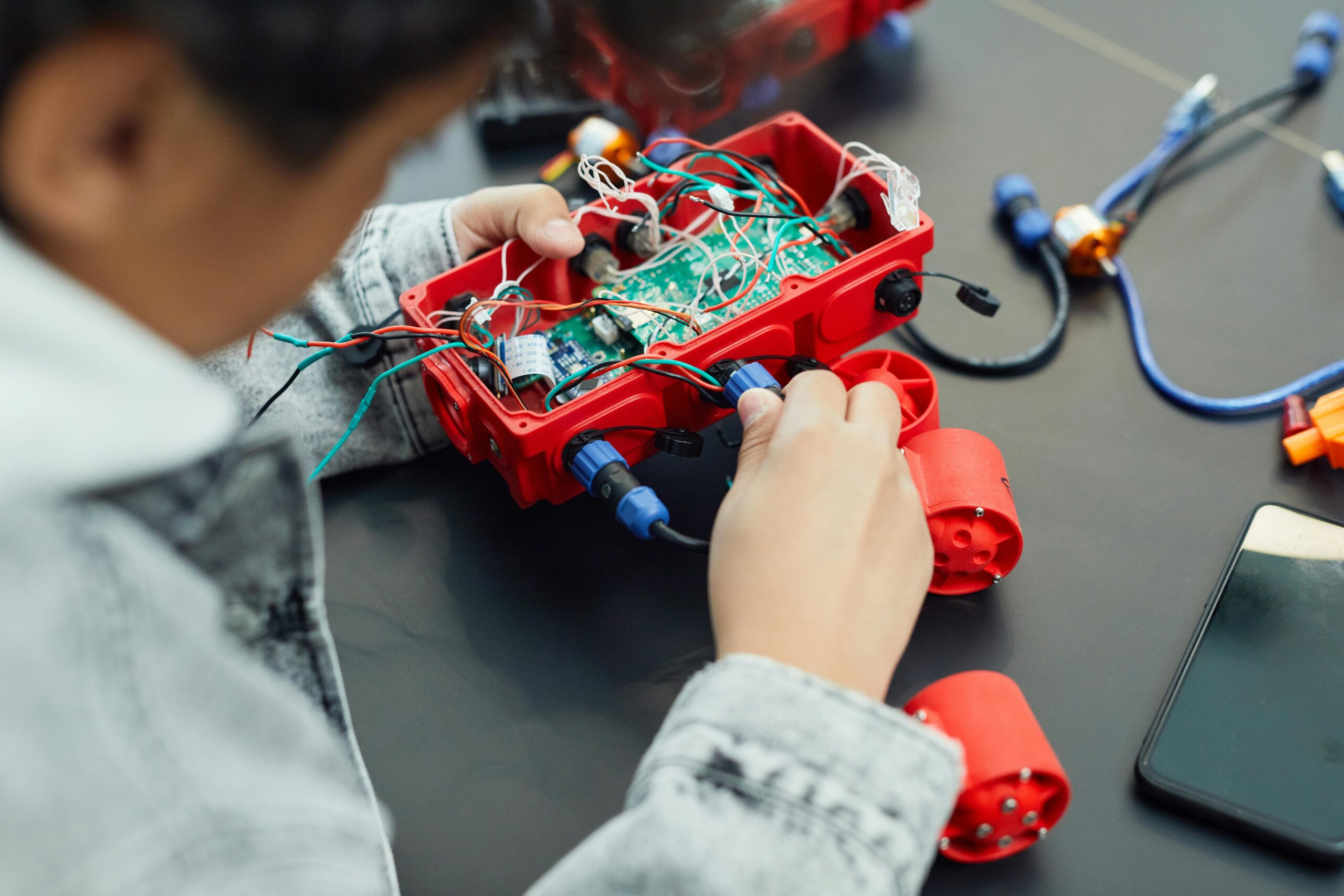
7 Industries That Use Plastic and Rubber Molding Services
Plastic and rubber molding services play a key role in many manufacturing processes for various industries. Each industry depends on materials made from molding processes to increase the functionality of its products. At Clark Rubber and Plastic, we manufacture high-quality materials that meet our clients’ demands. Here are seven industries that use molding services:
1. Automotive
The automotive industry uses plastic- and rubber-molded products to produce components that enhance a vehicle’s safety, performance, and comfort. These products include tires and seals to prevent flat tires while driving. Interior and exterior elements include bumpers, door panels, and interior trims. Engine parts like hoses, belts, and mounts support the engine and are heat resistant. Manufacturers also use rubber and plastic moldings for electrical wiring coverings.
2. Healthcare and Medical Equipment
Healthcare industries rely on rubber and plastic molding products to produce safe, sterile components for patient care and medical advancements. These include medical devices such as ventilators, blood pressure monitors, and diagnostic equipment. Other products, such as surgical instruments, use rubber for sterile solutions. Manufacturers use custom-molded materials to make lightweight prosthetic and orthotic devices.
3. Consumer Goods
Rubber molded products are designed for everyday household items, such as kitchen utensils and tools like silicone baking molds. Many toys are rubber-molded to make sure they are child- or user-friendly. Soles and inserts in footwear are often molded from rubber to be slip-resistant while providing comfort. Other household moldings contribute to personal care products and their ergonomic design.
4. Electronics and Electrical
Plastic and rubber molding services create protective coverings for wires to resist environmental factors like heat and moisture. Plastic moldings are also used to make connectors, sockets, and plugs to house wiring connections and prevent the wires from touching. This can prevent sparks. Household electronic devices contain lightweight molded pieces to protect components from dust, water, and other contaminants.
5. Construction and Infrastructure
In construction, piping and fittings use rubber gaskets to seal plumbing and water management systems. Rubber molding services also create seals for windows, doors, and HVAC systems for weatherproofing and maintaining energy efficiency. Plastic and rubber are necessary to produce personal protection gear such as safety boots, gloves, and eyewear.
6. Renewable Energy
Engineers use molded rubber seals in dams and turbines to make sure they are water-tight. Rubber hoses are utilized because they can withstand extreme temperatures and pressures. Plastic framing protects solar panels from environmental conditions.
7. Aerospace
Components on aircraft, such as shock absorbers and fuel system parts, are from rubber molding services. Even items inside the aircraft, like tray tables and door handles, are built from moldings. These parts are durable enough to withstand changes in air pressure during take-off and landing.
Schedule Rubber Molding Services Today
Plastic and rubber molding services are used in industries worldwide, offering durable and lightweight materials. Our rubber molds support natural rubber, neoprene, and nitrile. From vehicle safety and medical equipment to everyday household products, molding services are integral to manufacturing. At Clark Rubber and Plastic, we deliver top-quality molding services to fit your needs. Call us today to schedule production for your next project.
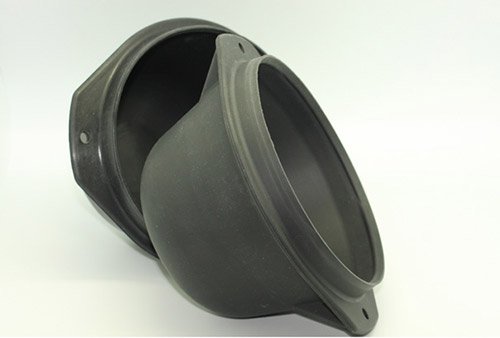
The Rubber Overmolding Process and Why It’s Used
Rubber overmolding is used in a variety of industries, including appliance, automotive, solar, and military. In rubber molding, plastic or other materials are encased in a layer of rubber molding to become a single custom part. Clark Rubber and Plastic provides this and other types of rubber processing for your needs. Here is the rubber overmolding process and why it is used:
What Is Rubber Overmolding?
Rubber overmolding is the process of pouring rubber over existing parts or into a mold to create a new item. This may include cell phone cases, toothbrushes, electronic parts, and more. After a hard substrate, like plastic or metal, has been molded to the desired shape, rubber is injected into the mold to cover the substrate. Rubber may also be poured into a mold without a substrate. We provide molding services for natural rubber, neoprene, nitrile, silicone, and more. Overmolding can also create parts with tight tolerances to make sure all elements fit together precisely.
Why Is It Used?
Rubber molding is used to improve a part’s longevity or to add cushion between parts or on tool handles. At Clark Rubber and Plastic, we offer consultations to determine your project goals and recommend the best molding process. Here are some reasons we may recommend overmolding:
Improved Grip
Rubber provides a natural grip when applied to items. The handles of tools like screwdrivers, wrenches, and hammers are often coated in rubber to offer additional grip or prevent the tools from slipping out of your hand during use. The medical industry also uses this process for tools like syringes, catheters, and dilators to reduce injury during surgery. Car part manufacturers also use this type of molding to protect parts from damage.
Shock and Sound Absorption
Overmolding helps absorb shock, which is beneficial in motor vehicles. During a collision, rubber helps absorb the impact, reducing the damage to your car. Stereos can also be protected from shock and sound damage by using overmolding on their components. We provide a variety of rubber moldings to protect your inventory from damage. Rubber mats can be added to workshops or other facilities to reduce noise and floor damage from vibrating machinery.
Improved Durability
Overmolding helps make items more durable. Applying rubber over the substrate helps preserve the tool’s base components, prolonging its life. Rubber can stretch and move, helping prevent breakage when heavy items are dropped or are in constant motion. For better protection, use rubber molding on parts that are frequently used and impacted.
Waterproofing Seal
Use overmolding where parts join to create a waterproof seal. Rubber is vulcanized with oxides and sulfur, so it is denser, and water rolls off. This is ideal for motorized vehicles, pumps, roofs, and other applications. Shoes use rubber to keep feet dry and protect them from impact with each step. Many rubbers are also resistant to gas and steam, helping to contain liquids within product parts like piping or storage tanks.
Rubber Molding for Your Business
Rubber molding and overmolding can help your business protect the key components and tools for your equipment and manufacturing projects. They provide shock and sound absorption, waterproofing, and gripping qualities that help enhance the durability of your items. The molding facilities at Clark Rubber and Plastic use advanced equipment to deliver high-quality products in low—or high-production quantities according to your deadlines. We also offer printing, assembly, packaging, and kitting services so your product is ready for use or shipping. Contact us today, and we can help you create the parts and molds you need.

What Materials Are Used in Rubber Molding?
Rubber molding services are a good solution for businesses that need custom parts for various applications. At Clark Rubber and Plastic, we produce customized rubber components that match the dimensions and production value of each project. To create these products, we use materials like natural rubber, neoprene, and nitrile. Here’s more information about the molding process and the materials and equipment we use:
Rubber Molding Process
Rubber molding is the process of turning raw materials into unique shapes that serve a functional purpose in many applications. Manufacturers in the automotive, solar, and home appliance industries use rubber parts as seals, gaskets, tubing, and anti-vibration pads. The molding process begins by selecting a rubber type and adding it to a high-heat chamber. In this chamber, the rubber melts to become more pliable. Once the melted rubber has an even consistency, it enters a mold or die, where it is formed into a unique shape. After the molded rubber cools, manufacturers cut it to size to match the project’s requirements. The final rubber components are then ready to be shipped to the customer.
Rubber Types
Depending on the specifications of your project, you can choose from uncured rubber materials like natural, liquid silicone, ethylene propylene diene monomer (EPDM), nitrile, and neoprene rubber. Some rubber types, like EPDM and neoprene, are more resistant to heat and chemicals. These characteristics make the material ideal for creating components that will be used in engines and environments exposed to extreme weather. Natural rubber has significant rebound resilience and flexibility, making it useful for products like seals and gaskets. If you are unsure which rubber is most suitable for your project, our team will recommend rubber types that will resist damage, offer flexibility, and remain durable over time.
Colorants
To create a fully customized rubber product, you can select a colorant. Manufacturers add the colorant to the prepared rubber before heating it to confirm the materials melt and combine evenly. This process results in a solid-colored rubber product that matches your business’s branding or the intended application.
Melting Chambers
After combining colorants and uncured rubber materials, manufacturers pour the mixture into a hopper that leads to the heating chamber. While in the chamber, the materials are heated until they melt and are ready to be placed into the mold. These machines may have dryer components that keep moisture away from the rubber as it melts, preventing contamination.
Molds
Rubber molds are typically made from metal materials to confirm the melted rubber is held firmly in place as it cools. Some molding methods include injection, compression, and transfer. Our team will recommend a molding process that matches your product type to make the production as efficient as possible. The mold may be designed to produce a single part or multiple components at once, with specific dimensions for each project.
Explore Rubber Molding Services
Clark Rubber and Plastic offers molding services to companies in various industries. We use computer numeric control equipment to make sure your products are as precise as possible. This equipment also allows us to produce a high volume of rubber components in a short amount of time. Contact our team today to learn more about our molding processes for rubber and plastic parts.

3 Uses of Custom Rubber Molding
Customized orders for appliances, consumer products, or automotive can be created at Clark Rubber and Plastic. Using natural and synthetic rubbers, we produce industry-specific parts in high or low-production quantities and of high quality. Modern technology has improved rubber production and has added synthetic rubber fitting specific needs including weather and chemical resistance. Here are custom projects to review when making rubber molding products:
Different Types of Rubber Molding
Here at Clark Rubber and Plastic, we produce rubber molding in three ways at our factories: injection, transfer, and compression molding. With our dedicated team of professionals, we can work with your business and take custom orders. We service many industries including solar, automotive, appliance, and more. Here are three types of custom rubber molding applications from Clark Rubber and Plastic:
Solar
Solar panels are exposed to harsh elements, including UV rays, storms, extreme temperatures, and more. We use a specific rubber type, ethylene propylene diene (EPDM), for our solar panel products. Our production processes include injection and compression molding, to fit the needs and design of each part in these solar farms. This increases the efficiency and durability of the panels.
Each part, like rubber cable entry seals, fills a specific role in the solar panel. They offer a protective barrier for the cable going into the panel. Parts like this need to be durable and resistant to weather. We use a compression and transfer molding process to create this part with our precise and quality process.
Automotive
The automotive industry has various parts, such as hoses, seals, gaskets, engine mounts, and bumpers. These products fit specific measurements and operate in different environments. They serve specific functions, like transferring hot fluids. Products like hoses for the cooling system are durable rubber parts that will not degrade when running corrosive and hot coolant.
Clark Rubber and Plastic uses quality rubber and precise equipment to produce automotive parts in each application, like engine mounts, that need shock absorption. Engine mounts need durability from the weight of the motor shifting during use and resistance to water, mud, and other mediums. We use the right rubber, natural or synthetic, with the most effective processes. This includes our injection, transfer, or compression method to produce each product.
Appliance and Commercial Use
Appliances, including washing machines, may use custom rubber molding products. We can produce tight-fitting seals and grommets that keep the machine water sealed. Most appliances like fridges, dishwashers, and toasters can use rubber molding to protect power cables from damage and wear. Producing products for new appliances will require reliable and effective components, such as tubing and cords. Our team of experts will provide your latest appliances with durable, water-resistant, and energy-efficient products.
Contact Clark Rubber and Plastic For Molding
Clark Rubber and Appliance produces products for many industries, including military, medical, lighting, and more. We provide window trims, fences, bumpers, and more. Our team also adheres to the standards of the American Society for Testing and Materials (ASTM) and Rubber Manufacturers Association. Contact our team today to learn more about rubber molds and how we can customize your order.
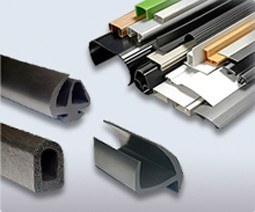
What is Rubber and Plastic Extrusion?
Extrusion molding can be used to make pipes and tubing, tracks, hoses, and drinking straws. Clark Rubber and Plastic offers two versatile material options for extrusion molding. Learn more about rubber and plastic extrusion, which options are right for your project, and how to use extrusion services:
Extrusion Process
Extrusion molding is a manufacturing process where a material is softened or melted and then pushed through a mold. After it cools, the shaped material is cut to the desired length for the final product. This type of molding works well with high-volume production and for tube-shaped items like rods, siding, or weather stripping. Clark Rubber and Plastic provides plastic and rubber extrusion services with cutting-edge technology for high-quality results.
Rubber Extrusion
Rubber extrusion is when rubber material is used in the extrusion process and molded into the desired shape. This is often used for products like weather strips and gaskets. Unvulcanized rubber is loaded into the extruder and forced through the shaped die under high pressure. The rubber takes on the shape of the die and is then vulcanized to harden it and add durability. Different types of rubber are used depending on the product’s requirements. Clark Rubber and Plastic has a facility set up to use natural rubber, neoprene, nitrile, and other rubber materials. Rubber-extruded products can be recycled at the end of their useful life, reducing waste.
Plastic Extrusion
The plastic extrusion process takes melted plastic and pressurizes it through a die. The extruded shape is then cooled with cooling rolls or water baths to solidify the product. Plastic extrusion is a versatile, high-volume manufacturing process that is suitable for pipes, fencing, deck rails, or window frames. The raw materials for plastic extrusion are typically plastic pellets that are loaded into a hopper. Additional additives like fillers and coloring are then added before the material is moved forward, heated, and shaped. Clark Rubber and Plastic’s extrusion services can produce a range of shapes, sizes, thicknesses, and hardness to fit your needs.
Differences Between Plastic and Rubber Extrusion
Plastic and rubber extrusion have a similar process but have final results with different properties. Rubber extrusion creates more flexible products with elasticity, even after the product has been cooled in the final stage. Products from plastic extrusion are rigid and may become deformed if you try to stretch them. Plastic is extruded at a higher temperature than rubber. Products from plastic extrusion are found in the solar, construction, automotive, and medical industries. Rubber-extruded products are used in appliances and electrical work.
Extrusion Services From Clark Rubber and Plastic
Extrusion molding is a flexible production option that often saves time and costs because the final product doesn’t always require post-production finishing. The continuous process allows a large amount of parts to be created quickly without requiring the multiple-step drafting process of other molding options. Extrusion also has some sustainable properties since the discarded material can be reused, and the finished items are often recyclable. Clark Rubber and Plastic handles are capable of high and low production needs with our cutting-edge facility. Contact us today to learn how we can fulfill your needs.
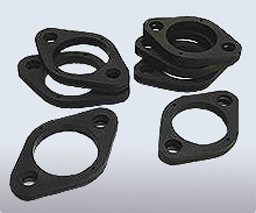
What Is Rubber Molding?
When manufacturers design products and machinery that require intricate pieces, they use the versatile rubber molding process to create them. Clark Rubber & Plastic uses this process to create custom parts for a range of industries. Here’s more information about the molding process and how it works:
Molding Overview
Rubber molding is a manufacturing process that creates custom three-dimensional parts. It involves designing mold cavities into which liquid rubber is injected and set to harden into shape. Rubber molding excels at creating specialty parts with intricate designs that adhere to narrow tolerances. Clark Rubber & Plastic offers rubber part-making services for automotive, appliance, military, solar, and consumer applications.
Molding Process
Rubber part manufacturing begins by creating a mold in the shape of the final part. Some of our clients who use digital design software, including AutoCAD, SolidWorks, and Catia, send us their product specifications to expedite the mold design process.
We offer molding processes that suit multiple applications and production requirements. Compression molding forms parts by placing raw rubber into an open mold to be squeezed into shape. Injection molding involves melting rubber and injecting it into a closed mold to harden. Transfer molding combines these two processes. We use modern injection machinery to produce parts in large capacities, which enables timely production schedules for small and large orders.
After the rubber material hardens in the mold, we inspect the finished part using specialty equipment. Inspection prevents defects and enforces quality control during batch productions.
Molding Materials
The intended use of the finished part informs which materials are chosen for molding. We offer natural and synthetic rubbers, including neoprene, nitrile, EPDM, and SBR. We also offer Viton®, which is a proprietary seal appropriate for gaskets, valves, and pumps. Our staff helps clients select rubber materials based on the needs of their project.

What Are Specialized Rubber Molding Services and How Can I Use Them?
Specialized rubber molding services turn raw materials into usable consumer products. These processes craft rubber into small and large components like gaskets and rubber mats. Molding services are used in many industries, like automotive, solar, and home appliance manufacturing. Here is more information about custom molding services and how businesses can use them:
Specialized Rubber Molding Services
The rubber molding process is used to create three-dimensional products . The molds are custom-made for each product based on the customer’s specifications. These molds can create products in high and low production quantities. The types of raw materials used in injection molding include natural rubber, neoprene, nitrile, EPDM, SBR, and fluorocarbon rubber. These rubber products are melted at high temperatures to prepare them to be injected into the custom mold requested by the client. Customers can choose the rubber material that best aligns with their product goals and company values.
The molding machine, or the horizontal press, holds the mold in place while the rubber is injected. This machine can exert up to 400 tons of clamping force, which helps fabricate parts with tight tolerances and exceptional finishes. After the rubber has set into its specialized shape, manufacturers use durometer gauges to test the hardness of the rubber. The hardness reading indicates the final product’s ability to withstand damage from impact and friction. Manufacturers use optical comparators to inspect the surface quality of the final product, checking for defects and dimensional accuracy.
Industries That Use Rubber Injection Molding
Many industries use rubber mold production to create prototypes that evolve into high-level manufacturing operations. These products range from small gaskets and grommets to major sealing systems and motor housings. The automotive industry uses molded rubber as weather stripping on doors and windows. They also use rubber hoses and seals within the engine area. Manufacturers in the solar and alternative energy industries use molded rubber gaskets to fill the gaps between solar cells. These gaskets seal the panels, making them waterproof and resistant to other elements.
Home appliance producers use rubber molding to create specialized parts that protect various machinery and electrical components. These rubber parts protect the appliances from moisture, dust, and other potential contaminants that could cause premature wear. The rubber also protects appliance users from electrical shock and contact injuries. Industries that use molded rubber include the medical, military, and industrial sectors. Companies that use design software and file formats like AutoCAD, SolidWorks, and Catia can send their product specifications directly to manufacturers to make the production process more efficient.
Explore Specialized Rubber Molding Services
Clark Rubber and Plastic offers customizable molding services to help your business create high-quality products. We provide a range of rubber materials to help your molded product meet your company’s goals and preferences. We also offer rubber extrusion services to produce various profiles, shapes, and forms. Our molding and extrusion processes align with the safety and quality standards of the Rubber Manufacturers Association. Contact us today with information about your project to receive a free quote.
- 1
